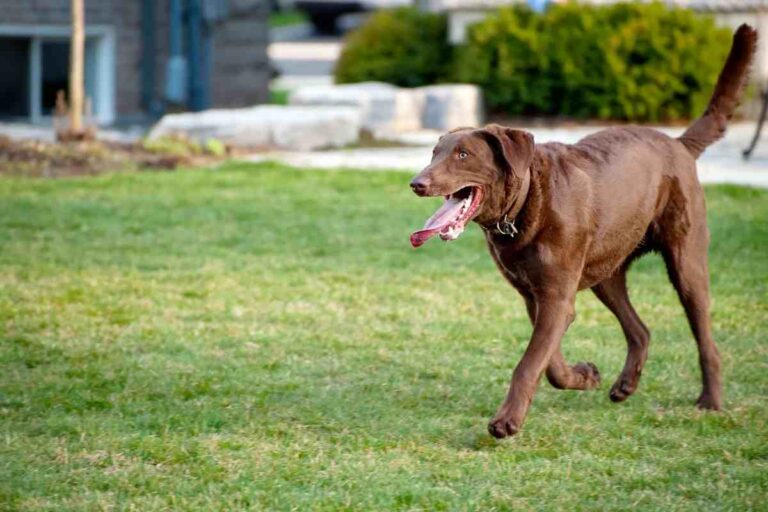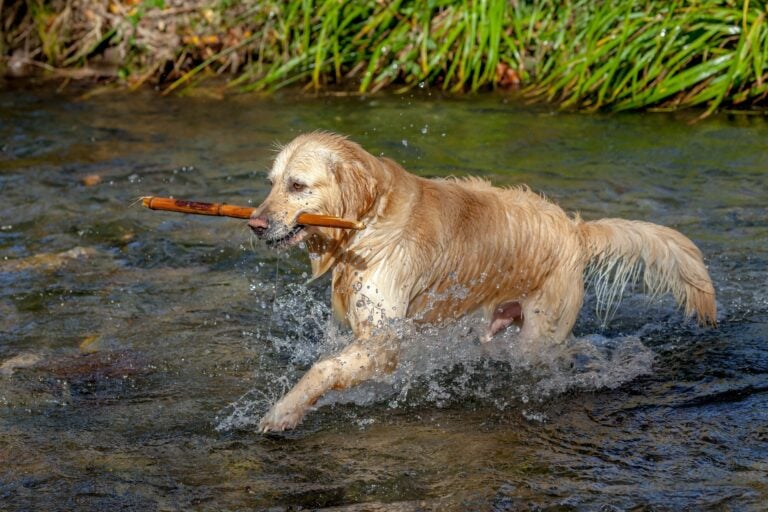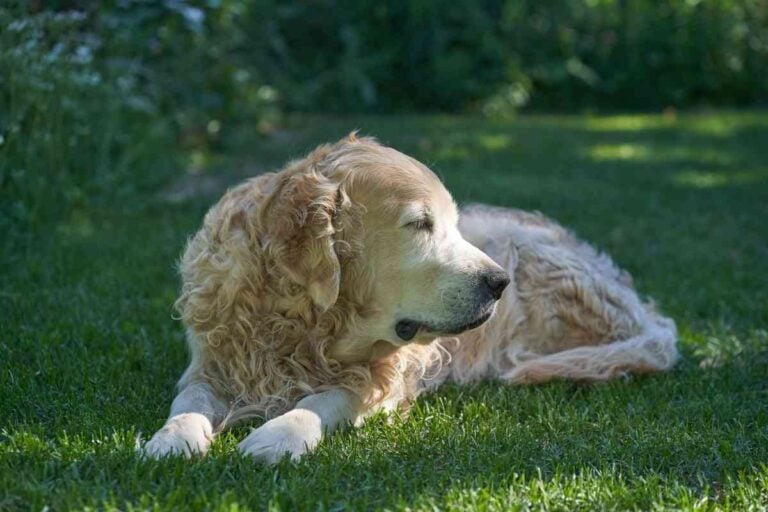Historical Background of Labrador Retrievers: Origins and Development
From its humble beginnings in Newfoundland to its esteemed position as America’s favorite breed, the Labrador’s journey is a testament to its versatility, adaptability, and unparalleled temperament. The historical background of Labrador Retrievers is fascinating.
From their roots diving for fish and nets in Newfoundland to their multifunctional roles as hunters, police dogs, service dogs, and cherished pets, here’s the history of the Lab. We’ll go into some of the hard details, like why there weren’t many yellow labs in the early history of the breed.
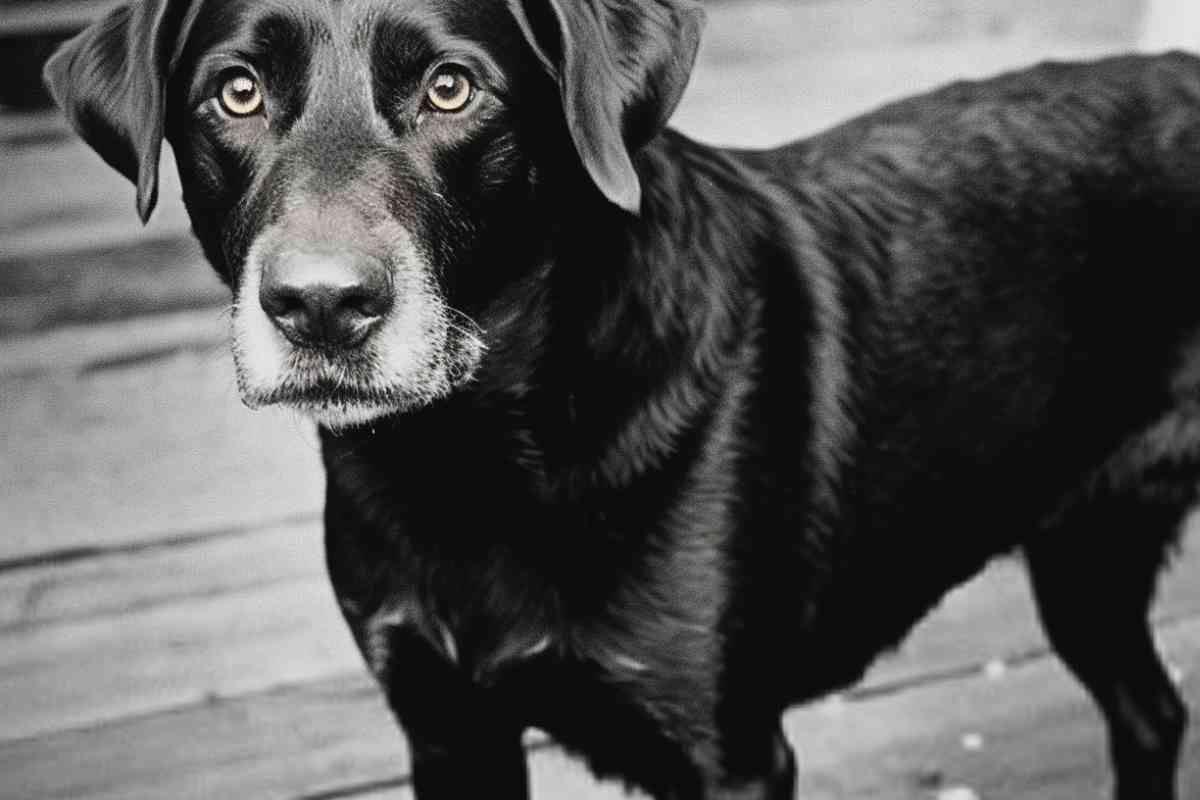
What is the historical background of Labrador Retrievers?
The Labrador Retriever originated in Newfoundland, Canada, in the early 16th century. Initially known as the St. John’s dog or Lesser Newfoundland, they were used by fishermen to help pull in nets and catch fish that escaped from fishing lines. In the 19th century, the breed was brought to England, where the breed’s name was changed to the Labrador Retriever. Over time, Labradors became popular for their hunting abilities, temperament, and later as service dogs, police dogs, and family pets. Today, they are one of the most popular dog breeds worldwide.
Dive into the captivating history of this beloved breed, as we explore its evolution from a working dog to a cherished pet, show star, and beyond.
Historical Background of Labrador Retrievers: Beginnings
The Origins of the Labrador Retriever
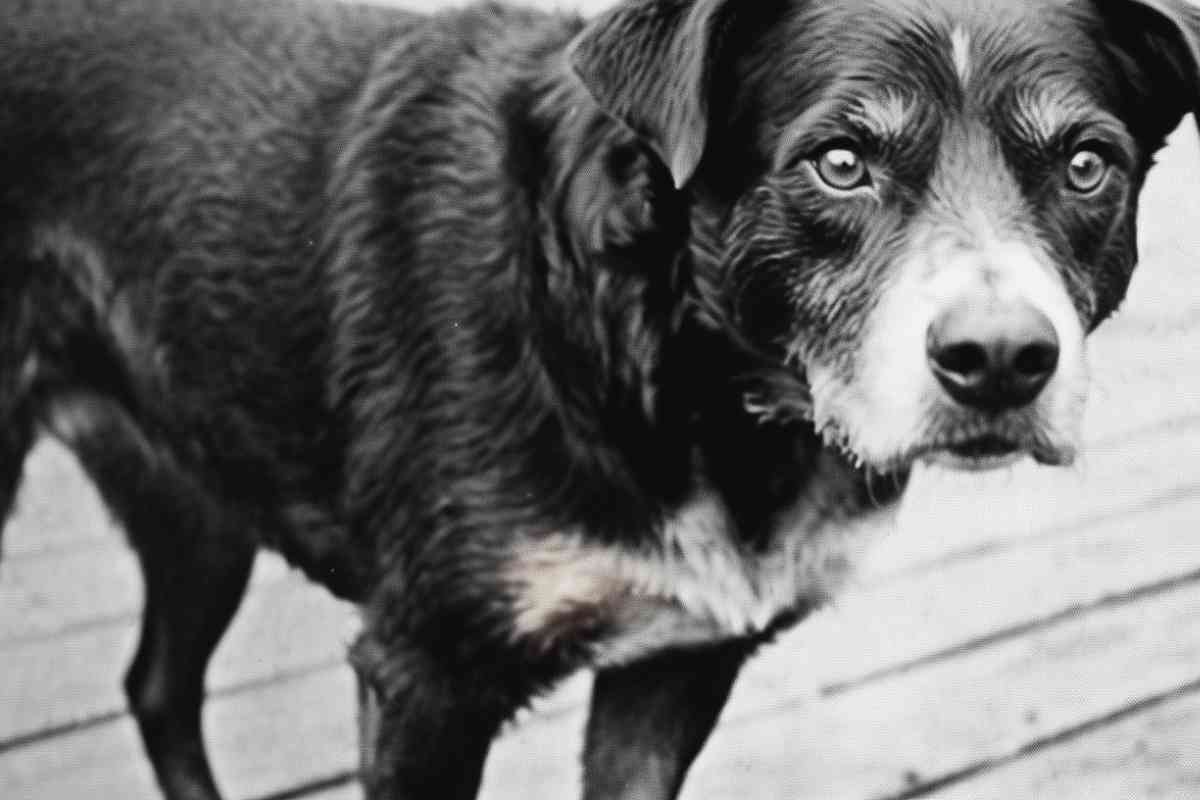
The St. John’s Water Dog: Newfoundland’s Pride
The Labrador Retriever has deep roots in Newfoundland. It all began with the St. John’s water dog. This breed had many names: Lesser Newfoundland, true Newfoundland, or small Labrador.
European fishermen in the 16th and 17th centuries brought English, Irish, and Portuguese working dogs to Newfoundland. These dogs interbred, creating the St. John’s water dog.
A Fisher’s Essential Companion
These dogs were invaluable to fishermen. They were skilled on land and in water. Their coats repelled water.
Their webbed feet and strong tails made them excellent swimmers. They could retrieve fish from nets and dive to fetch objects.
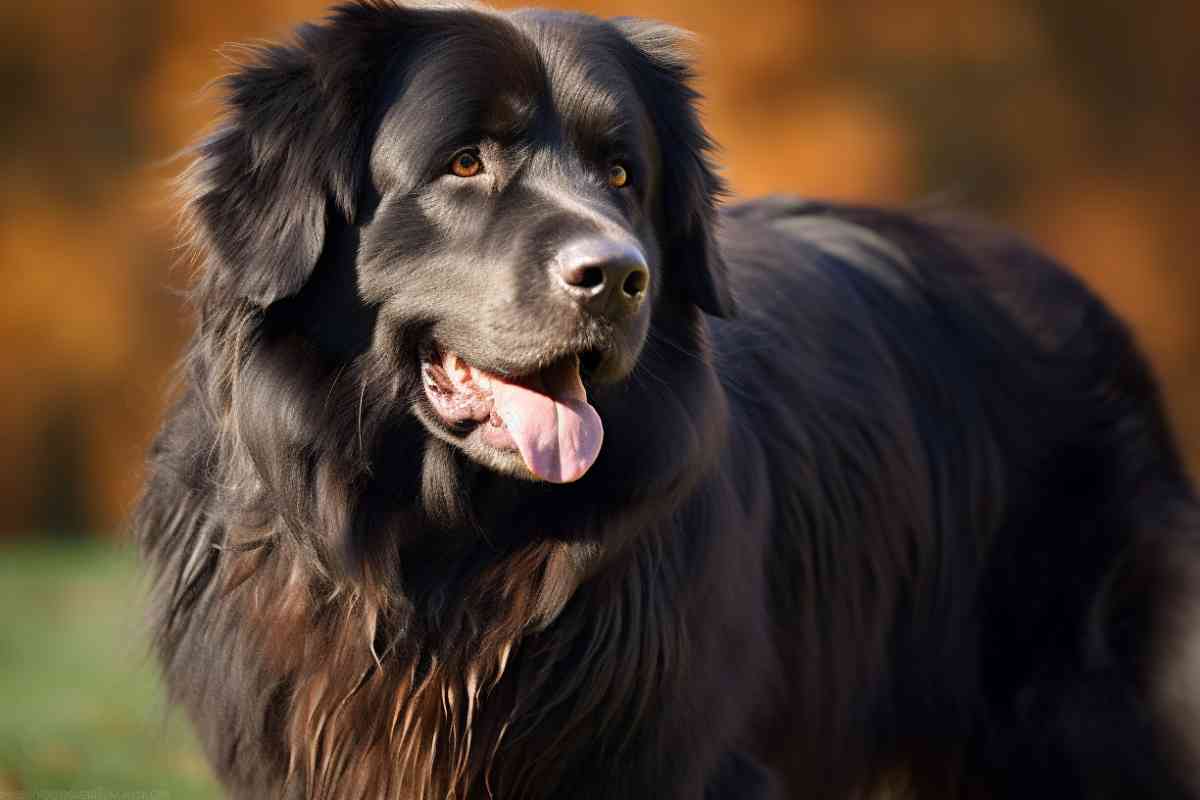
The Evolution: From St. John’s Dog to Labrador
The larger Newfoundland dog was bred for tasks like hauling wood. The smaller St. John’s water dog caught the British aristocracy’s eye.
By the early 19th century, they were being imported to Britain. The second Earl of Malmesbury and the dukes of Buccleuch in Scotland started breeding programs. This led to the modern Labrador Retriever.
Facing Challenges at Home
The St. John’s water dog faced challenges in Newfoundland. In the late 19th century, the government promoted sheep farming.
Dogs were taxed heavily to reduce their numbers. The decline of outport culture in the 20th century further impacted the breed. By the early 1980s, the last known St. John’s water dogs passed away.
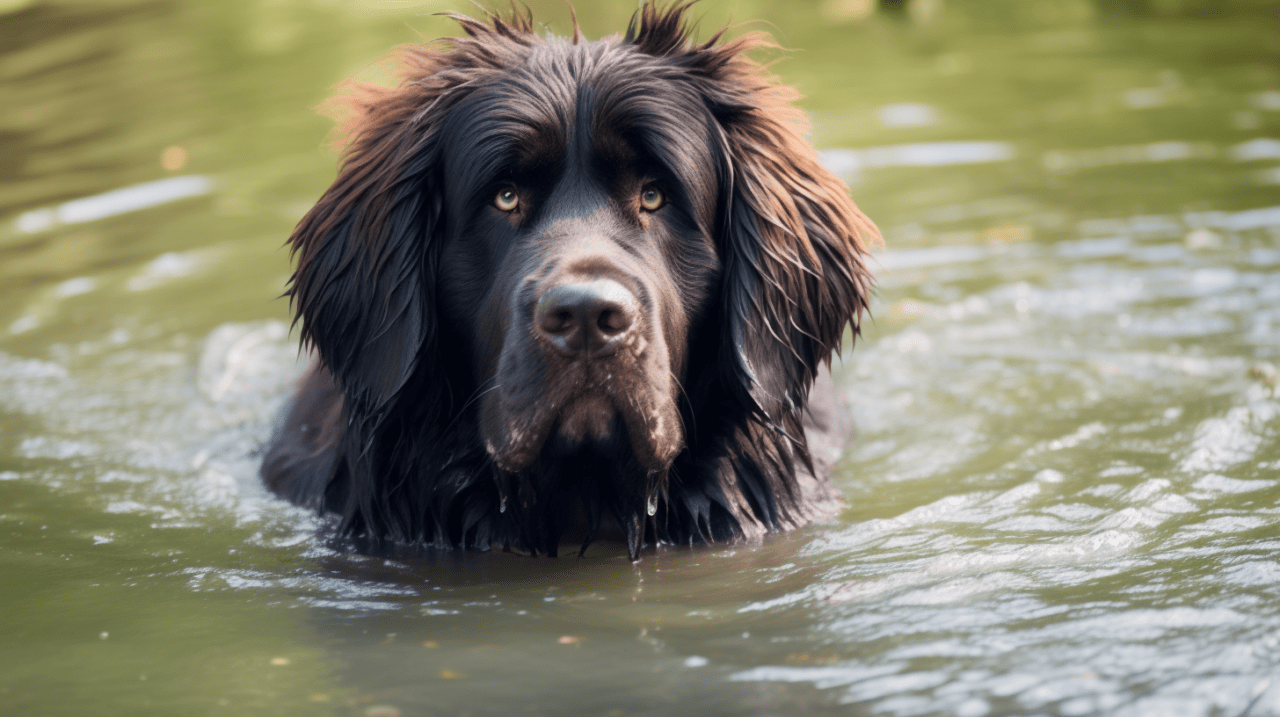
The Evolution of the Labrador Retriever from the St. John’s Water Dog
A Glimpse into the Past
Richard A. Wolters, in his book “The Labrador Retriever: The History… The People (1981),” provides a vivid account of his journey to Grand Bruit, where he captured some of the most striking images of the St. John’s water dog.
As the breed neared extinction, efforts were made to preserve its legacy. Notably, writer Farley Mowat, in the 1970s, crossed his St. John’s water dog with a Labrador, gifting two of these crosses to Prime Minister Pierre Trudeau.
The Role of the English Aristocracy
The survival of the breed owes much to the English aristocracy, particularly their passion for hunting and their resources. The Malmesbury kennel played a pivotal role, with successive generations ensuring its continuity.
They even sourced dogs from Newfoundland to bolster their breeding stock. Concurrently, in Scotland, the Duke of Buccleuch established his kennel of water dogs, also obtaining a Newfoundland dog. Collaborative efforts between kennels ensured the breed’s preservation.
The Birth of the Name ‘Labrador Retriever’
The aristocrats likely played a key role in coining the name ‘Labrador’ for the breed. The term first surfaced in print in 1814 in “Instructions to Young Sportsman” and later in an 1823 painting by Edwin Landseer.
The third Earl of Malmesbury, in 1887, noted his preference for the name ‘Labrador dogs.’
The breed had various names initially, necessitating a unified name for clarity. While ‘English retriever’ was considered, the name ‘Labrador’ resonated more, possibly due to its association with the Labrador sea or its proximity to Newfoundland.
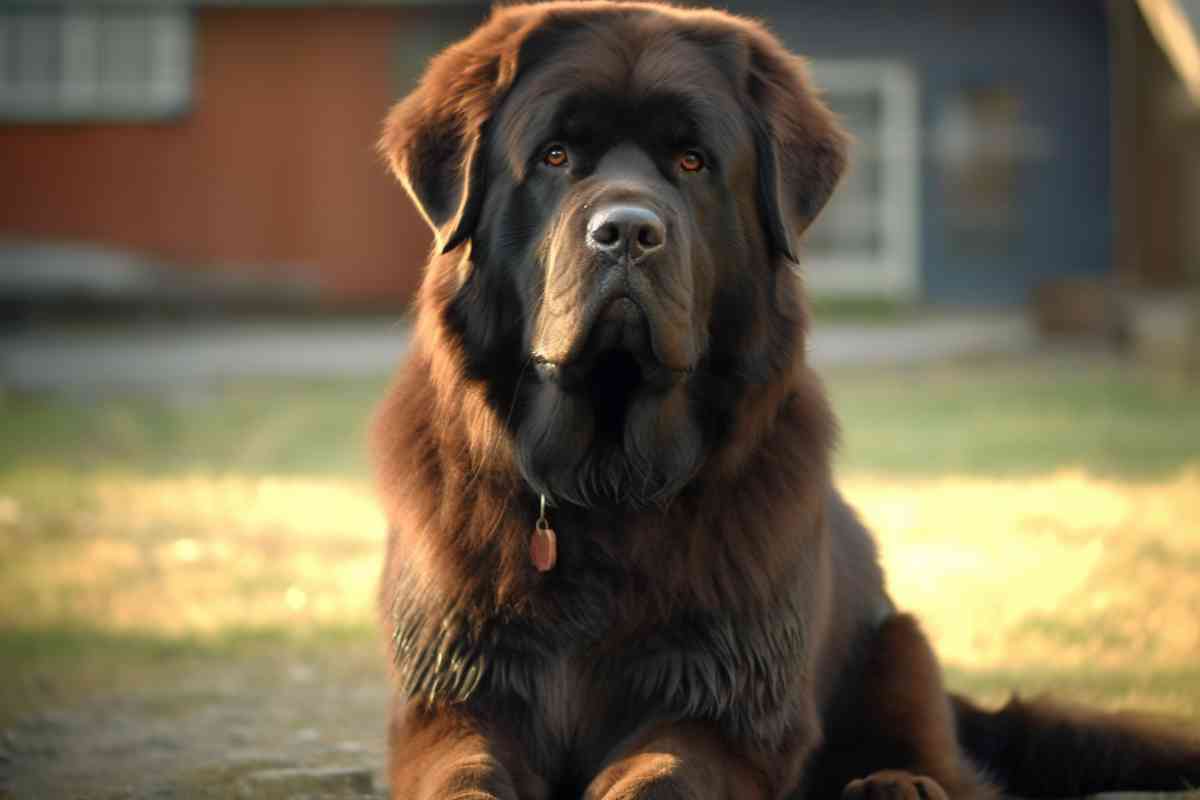
How Labs Developed Into the Dogs We Know Today
The Colorful History of Labrador Retrievers
Emergence of the Labrador Retriever
By 1870, the name “Labrador Retriever” had become widely accepted in England. Originating from the St. John’s dog, which survived until the early 1980s, the Labrador Retriever underwent various color evolutions over the years.
The Yellow and Chocolate Labs
In the breed’s early days, yellow and chocolate pups would occasionally be born. Sadly, many were culled until the 20th century when these colors began to gain acceptance.
The first recorded yellow Labrador, Ben of Hyde from the kennels of Major C.J. Radclyffe, was born in 1899. This color was officially recognized by The Kennel Club in 1903, and the first American Kennel Club (AKC) registration for a Labrador was in 1917.
The chocolate Labrador made its appearance in the 1930s, though liver-spotted pups were noted at the Buccleuch kennels as early as 1892.

History of Subtypes
Yellow Labradors
In the breed’s infancy up to the mid-20th century, what we now refer to as “yellow” Labradors were actually a dark, almost butterscotch color. This shade was initially termed “Golden” until the UK Kennel Club mandated a change, arguing that “Gold” wasn’t a true color.
As the 20th century progressed, lighter shades of yellow to cream became more popular. The 1980s saw a resurgence in interest for the darker shades of gold and fox red, with dogs like Balrion King Frost and Wynfaul Tabasco playing pivotal roles in this color revival.
Chocolate Labradors
The origins of all Chocolate Labradors can be traced back to eight foundational bloodlines. The distinct chocolate shade wasn’t recognized until the 20th century.
Some crossbreeding with Flatcoat or Chesapeake Bay retrievers occurred in the early 20th century before the color gained official recognition. Chocolate Labradors were prominent in the early 20th century, notably in the kennels of the Earl of Feversham and Lady Ward of Chiltonfoliat.
All chocolate Labradors can be traced back to three black Labradors from the 1880s: Buccleuch Avon, Malmesbury Tramp, and Malmesbury June.
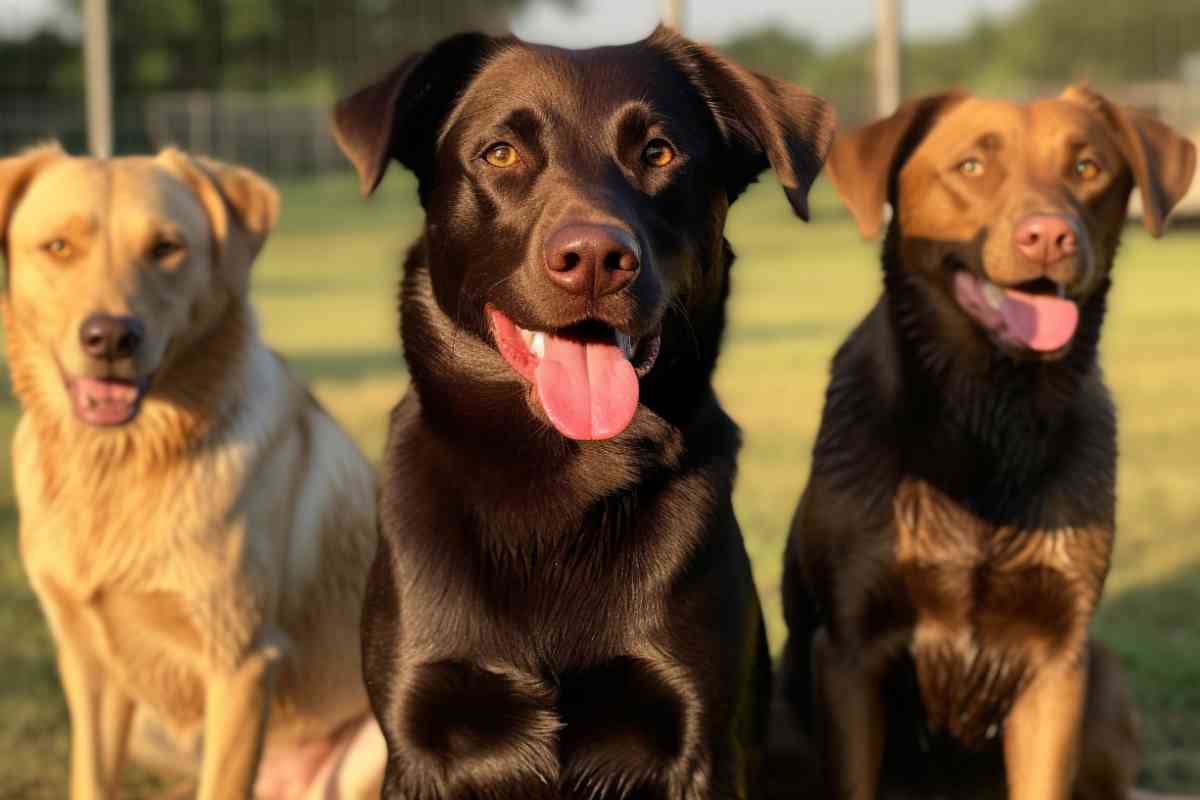
The Labrador Retriever: A Hunting Legacy
Origins in Newfoundland
The journey of the Labrador Retriever as a hunting companion began on the rugged coasts of the Island of Newfoundland. Originally known as the St. John’s dog or Lesser Newfoundland, these dogs were indispensable to fishermen.
With their strong paws and water-resistant coats, they excelled in retrieving fish that escaped from fishing nets and even diving underwater to fetch items.
Recognition by the British Aristocracy
The English aristocrats, particularly the 6th Dukes of Buccleuch and the Earl of Home, recognized the potential of these dogs beyond fishing. Their keen senses, intelligence, and trainability made them ideal for field trials and game retrieval.
The popularity of the St. John’s dog grew as a hunting dog when they were imported to the UK. Their ability to retrieve game from both water (even diving to retrieve) and land made them a favorite among the hunting elite.
Selective Breeding and the Rise of the Labrador
As the breed gained recognition, selective breeding programs were initiated. The aim was to enhance their natural retrieving instincts and temperament suitable for hunting.
The Labrador breed, as we know it today, began to take shape. Dogs like Nell and Ned played pivotal roles in setting breed standards.
The Role of Field Trials
Field trials in the early 1800s further propelled the Labrador’s reputation as a premier hunting dog. These events showcased their skills, endurance, and trainability, solidifying their status among hunting enthusiasts.
The genes of the early Labradors, combined with selective breeding, ensured that the best hunting traits were passed down through generations.
Modern-Day Labradors and Hunting
Today’s Labrador Retrievers are a testament to their ancestors from Newfoundland. Their keen nose, enthusiasm for retrieval, and love for water make them one of the most popular hunting dogs in America, Canada, and beyond.
Whether it’s flushing out game birds or retrieving waterfowl from cold waters, the Labrador continues to be a hunter’s trusted companion.
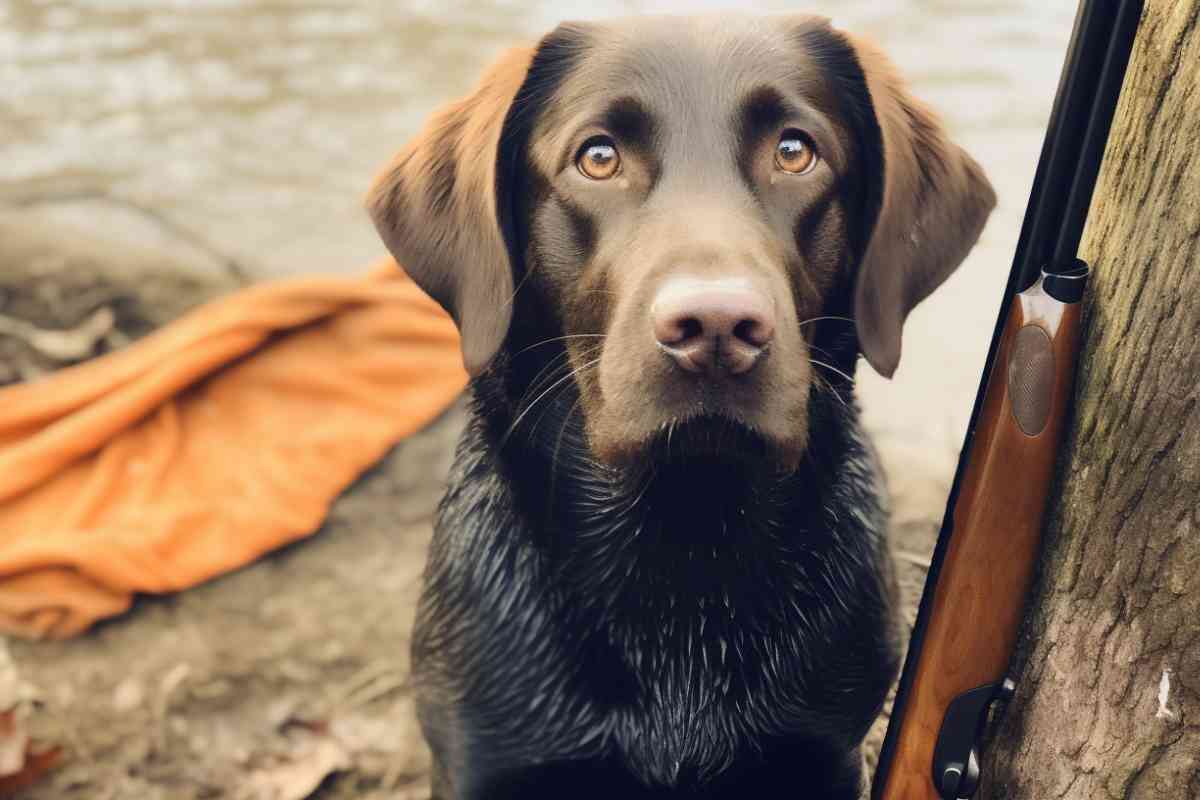
A Symbol of Hunting Heritage
From the fishing villages of Newfoundland to the hunting grounds of Britain and America, the Labrador Retriever’s history is deeply intertwined with hunting.
Their legacy is not just in their ability to hunt but also in the bond they share with their human counterparts. As Richard Wolters once noted, the Labrador’s history is rich, and its future as a hunting dog looks even brighter.
Labradors as Service Dogs: A Legacy of Assistance and Dedication
Innate Qualities of the Labrador
The journey of Labradors as service dogs is rooted in their intrinsic qualities. Known for their gentle temperament, intelligence, and eagerness to please, Labradors have always been easy to train.
Their history as hunting dogs, where they showcased their keen senses and responsiveness, laid the foundation for their future roles in service.
The Transition to Service
While Labradors have been popular as family pets and hunting companions, their potential as service dogs began to be recognized in the 20th century.
Their calm demeanor, combined with their ability to learn and execute complex tasks, made them ideal candidates for assistance roles. Organizations dedicated to training service animals started to prefer Labradors for their programs.
Roles in Assistance
Labradors have been trained in a variety of service roles. From guiding the visually impaired, with their careful navigation skills, to assisting those with mobility challenges, Labradors have proven their versatility.
Their keen nose, a trait honed from their hunting days, has also made them exceptional in medical alert services, detecting changes in blood sugar levels or oncoming seizures.
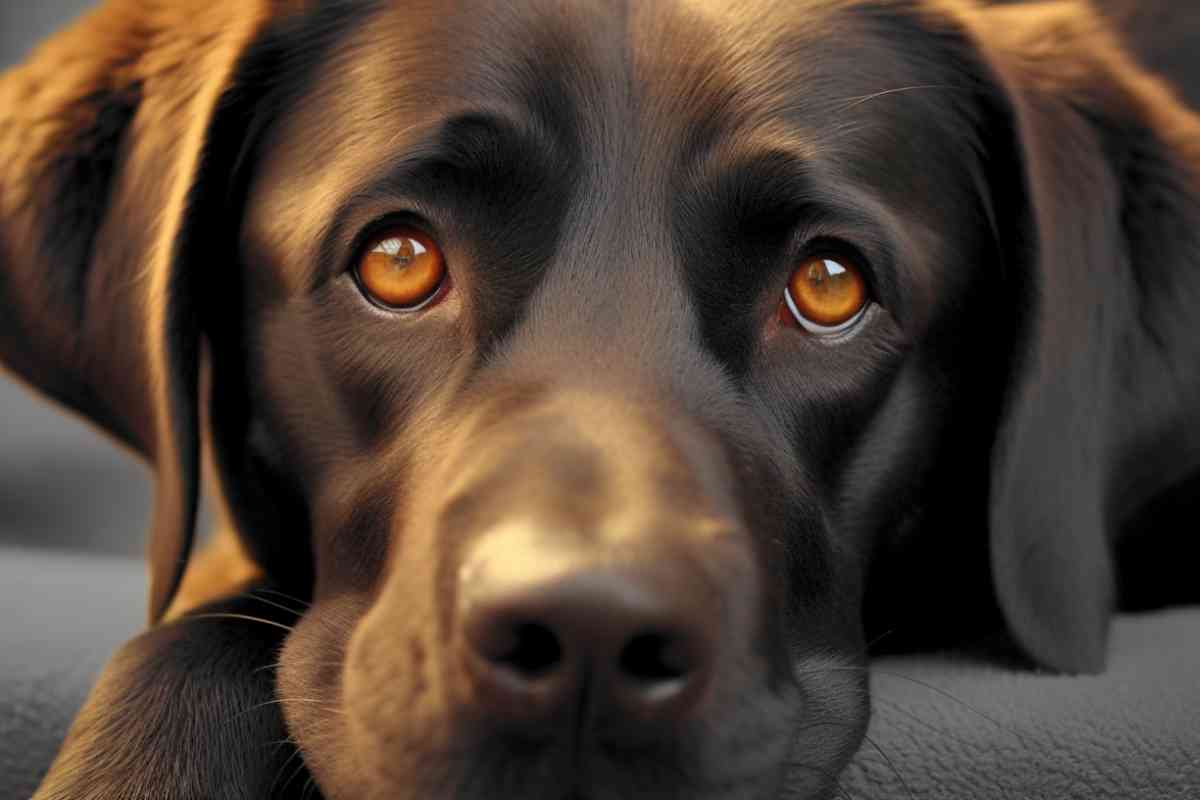
Emotional and Therapeutic Support
Beyond physical assistance, Labradors have played a significant role in emotional and therapeutic support.
Their empathetic nature and ability to sense human emotions make them excellent companions for those dealing with trauma, anxiety, or depression. In settings like hospitals, schools, and therapy centers, Labradors have been instrumental in providing comfort and relief.
Training and Certification
The development of Labradors as service dogs involves rigorous training. From basic obedience to specialized tasks, these dogs undergo months, sometimes years, of training to ensure they can assist their handlers effectively.
Organizations have set high standards for certification, ensuring that Labradors, and their trainers, are well-equipped for their roles.
A Symbol of Dedication and Loyalty
The evolution of the Labrador from a hunting companion to a service dog is a testament to the breed’s adaptability and dedication. Their history as service animals is not just about their skills but also about the trust, loyalty, and deep bond they share with humans.
Whether guiding the visually impaired, alerting individuals to medical concerns, or providing emotional support, Labradors have showcased their unwavering commitment to improving human lives.
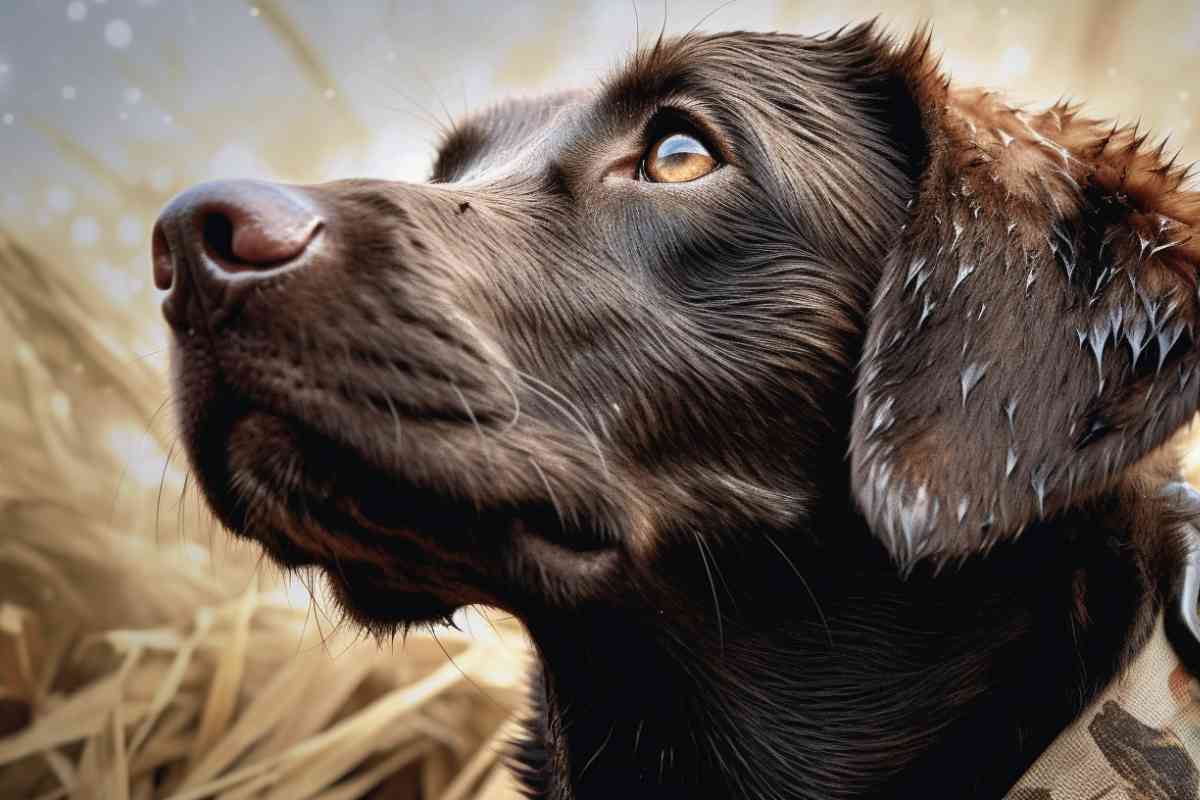
Labradors in Uniform: A Timeline of Service and Valor
Early Experiments with Canine Units
As early as 1910, railway police forces began experimenting with various breeds to assist in their duties. Among the breeds tested were Belgian Malinois, Labrador Retrievers, and German shepherds.
These initial trials set the stage for the broader adoption of dogs in policing roles, recognizing their unique abilities and potential contributions to law enforcement.
Labradors Join the Metropolitan Police Force
In a significant move in 1938, two Labrador Retrievers were specifically trained to join the South London Metropolitan Police Force.
These Labradors were not just passive participants; they actively accompanied officers on patrol, showcasing their versatility and capability in real-world policing scenarios. This marked a pivotal moment in the history of Labradors in service, solidifying their position as invaluable assets to the police force.
The Inherent Qualities of Labradors
The decision to incorporate Labradors into the police force was rooted in their inherent traits. Known for their keen nose, unwavering loyalty, and sharp intelligence, Labradors were naturally suited for roles that demanded precision and reliability.
Their history as hunting dogs, particularly their prowess in retrieving and tracking, further highlighted their potential in these specialized fields.
Broadening Roles in Policing and Beyond
Following their successful integration into the South London Metropolitan Police Force, the role of Labradors in policing expanded.
Their exceptional ability to detect scents made them indispensable for detecting narcotics, explosives, and contraband. Beyond detection, Labradors have been pivotal in search and rescue operations and community engagement roles.
Recognition and Legacy
Throughout their service, Labradors have consistently showcased their dedication and capabilities.

Their contributions in both police and later military roles have been recognized and celebrated. Tales of Labradors saving their human counterparts or aiding in complex investigations have become part of their rich legacy.
A Bond Beyond Duty
The story of Labradors in police roles is not just about their skills or their contributions. It’s a testament to the deep bond they share with their handlers. This bond, often forged in challenging situations, lasts a lifetime, with many Labradors retiring alongside their handlers, becoming cherished pets and lifelong companions.
Labradors: From Working Dogs to Cherished Pets and Show Stars
The Historical Journey of the Labrador Retriever
Recognized by the American Kennel Club in 1917, the breed took some time to gain traction among the American public. However, by the 1970s, they had captured the hearts of many, making their mark on the AKC’s Top Ten registry list.
Their rise in popularity can be attributed to a chance meeting between breeders and the sixth Duke of Buccleuch, who played a pivotal role in their breeding program.
The Labrador’s Versatile Temperament
Labradors, with their intuitive temperament, have been a favorite for many. Judy Heim, a Labrador enthusiast, often recalls a photograph showcasing the breed’s adaptability.
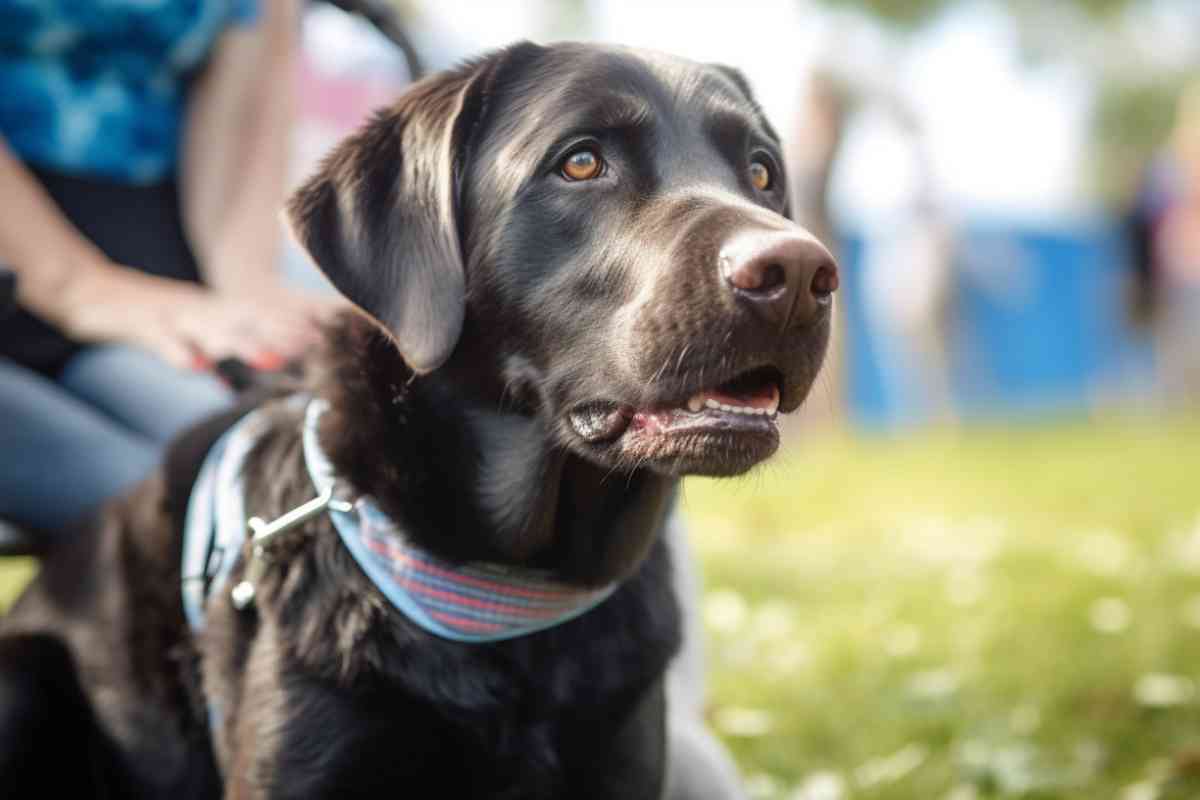
Whether it’s a waterfowl shoot in Portugal or simply lounging at home after long hours, Labradors are always eager to be by their owner’s side. This adaptability also makes them exceptional service dogs, with many being trained as guide dogs for the visually impaired.
The Labrador’s Role in Show and Competitions
Beyond being cherished pets, Labradors have also made a significant mark in the world of dog shows. Their impeccable temperament has made them a favorite among breeders and judges alike.
The Labrador Retriever Club of the Potomac Specialty Show, often likened to the Super Bowl for the breed, sees a significant international presence, highlighting the global appeal of the breed.
The Evolution of the Labrador Breed
Over the years, breeders have been dedicated to improving the health, structure, and temperament of Labradors.
With advancements in DNA testing and the discovery of certain recessive genes, breeders today have a plethora of tools at their disposal to ensure the health and well-being of the breed.
This commitment to the breed’s betterment has ensured that Labradors remain a favorite not just in the U.S., but around the world.
The Legacy of Labradors in the U.S. and Abroad
Labradors have had a profound influence on dog breeding both in the U.S. and internationally. While the U.S. saw significant influence from British sportsmen and their Labradors in the 1960s and 1970s, American Labradors have, in turn, impacted breeds abroad.
The breed’s versatility, from assisting in work to being a loyal companion, showcases its wide range of roles.
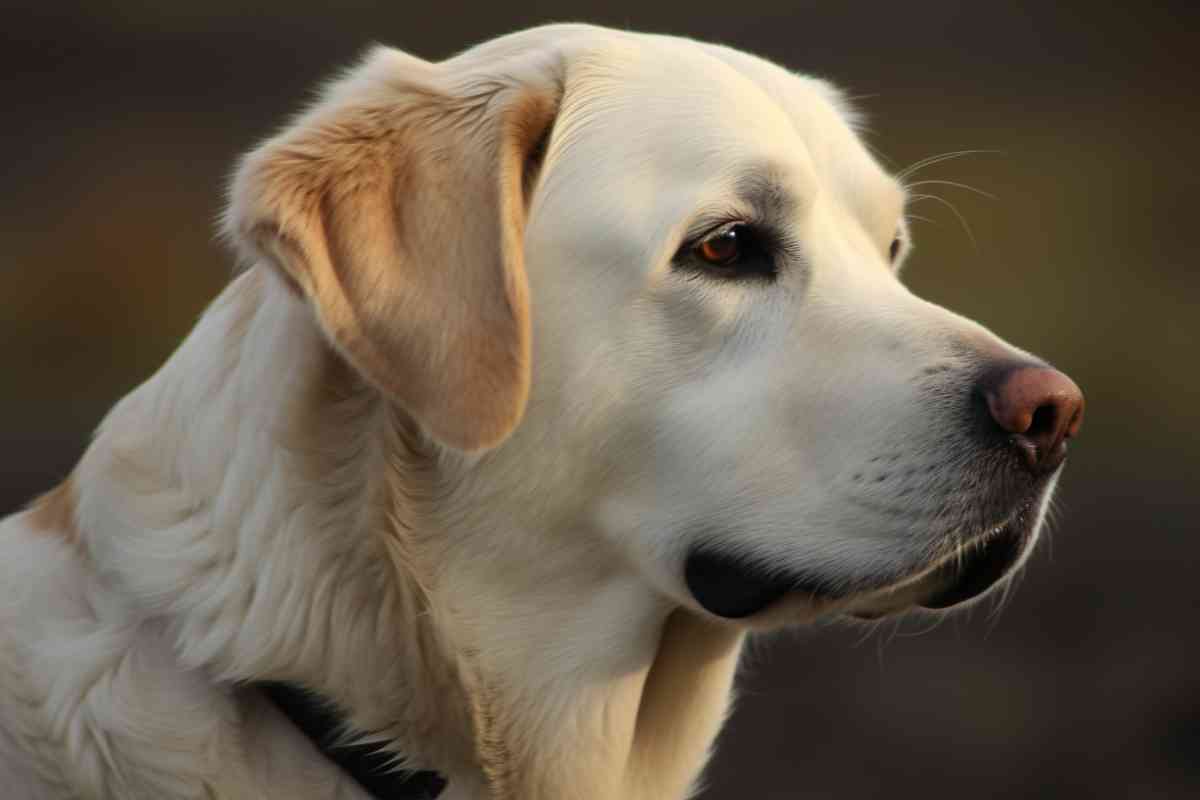
Conclusion to the Historical Background of Labrador Retrievers
Labradors have evolved from their origins as working dogs in Newfoundland to become one of the most cherished pets and show dogs in the U.S.
Their versatility, combined with their impeccable temperament, has solidified their position as America’s favorite breed for over three decades. Whether as a family pet, a show dog, or a service animal, the Labrador Retriever continues to win hearts worldwide.




